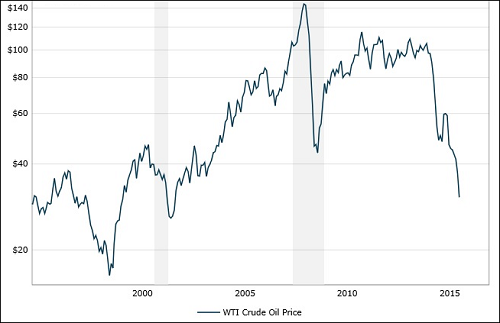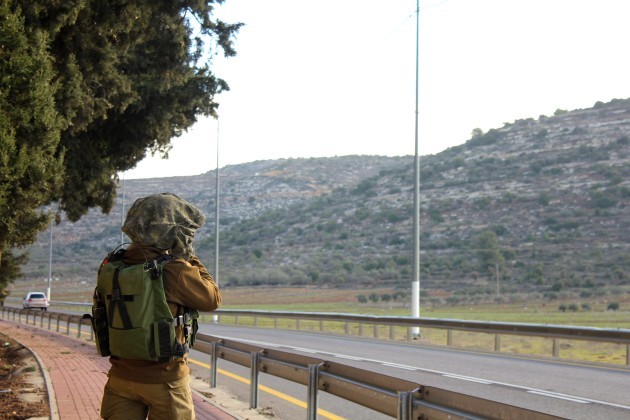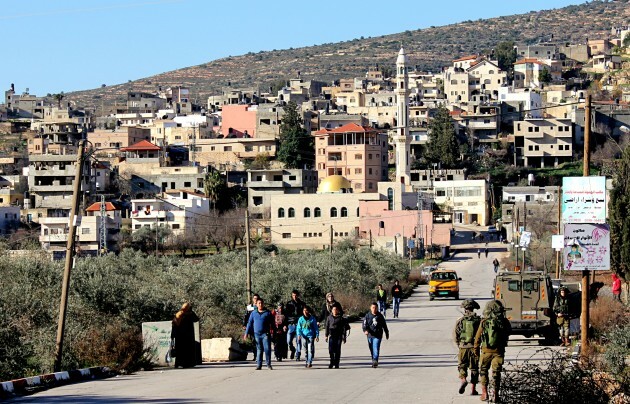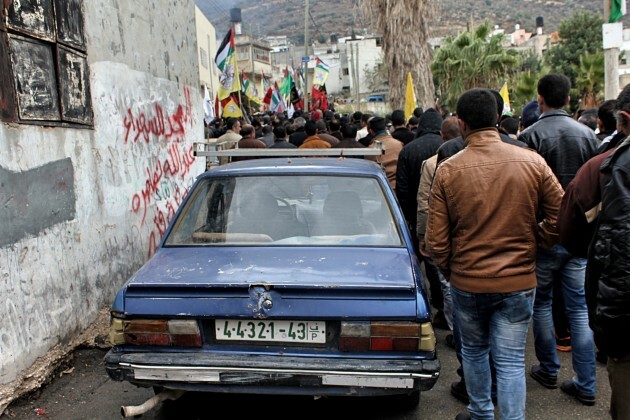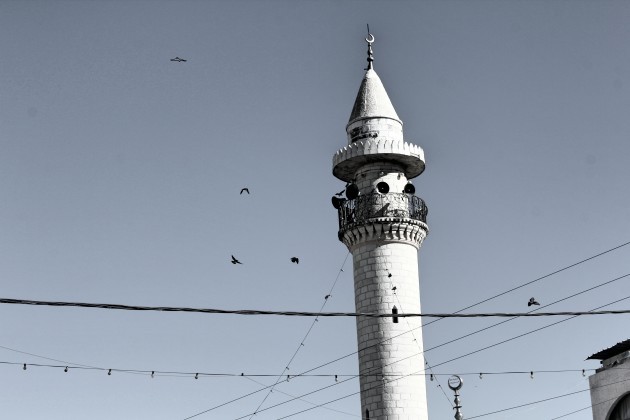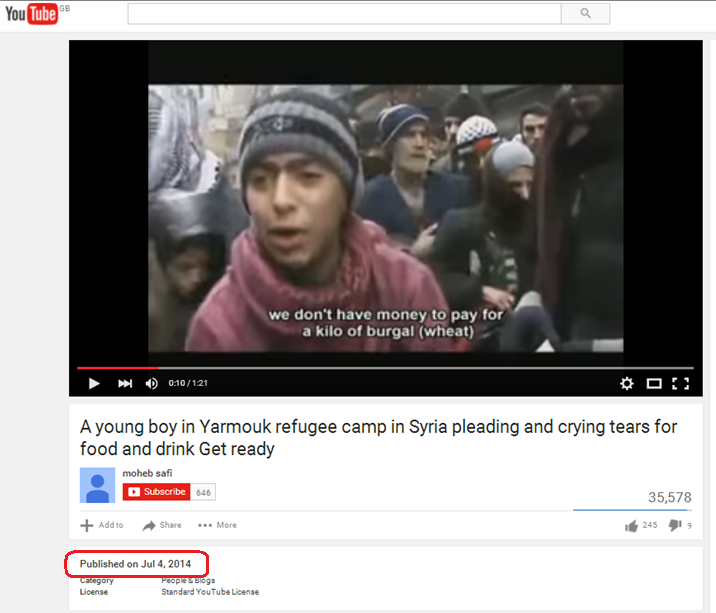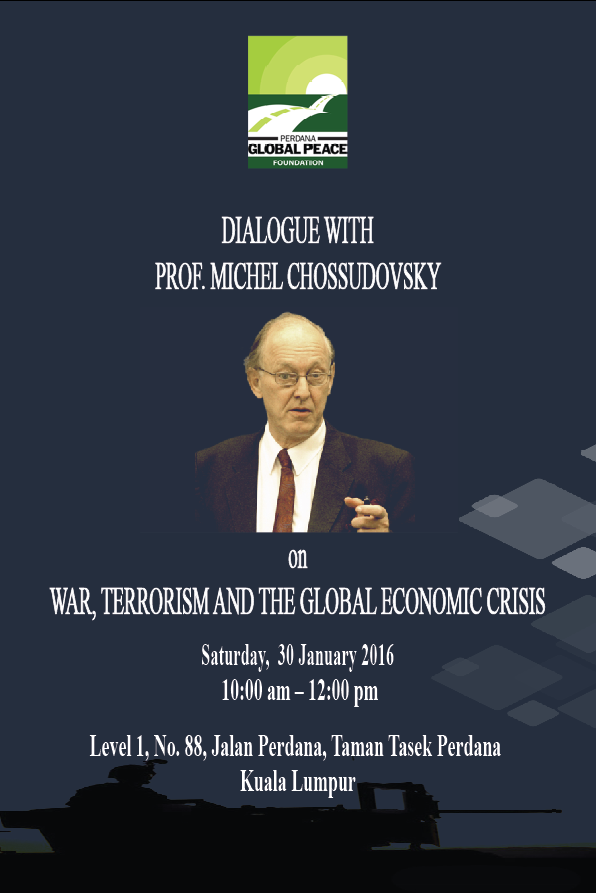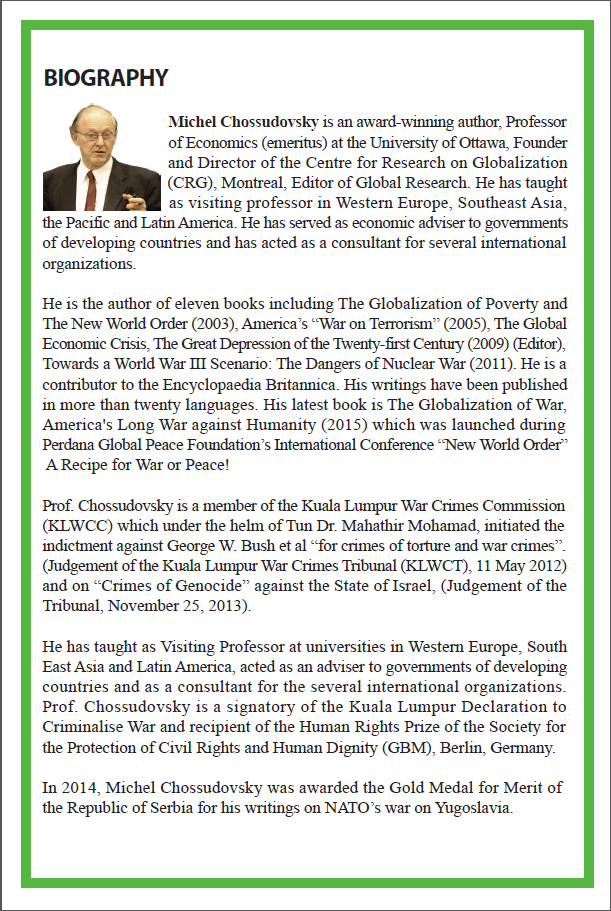Introducción
A finales del siglo XIX, Estados Unidos había terminado la conquista del territorio continental con la última batalla de Wounded Knee de 1890, que desembocó en otra masacre de los indios Dakota y en otra violación del tratado de paz firmado con ese pueblo. En pleno auge industrial, la nueva potencia estadounidense se encontraba con un excedente de capitales y de productos. Washington empezó entonces a buscar nuevos mercados y organizó del 2 de octubre de 1889 al 19 de abril de 1890 la primera Conferencia Internacional Americana, que agrupó a los representantes de las naciones del continente. El objetivo era aumentar el comercio de Estados Unidos con el resto de América Latina, cuyos intercambios se realizaban sobre todo con Europa, por razones históricas evidentes, y particularmente con Inglaterra, gran potencia económica de la época. Para ello, Washington también deseaba crear una unión aduanera, establecer una red de comunicación más eficiente entre los principales puertos del continente, adoptar una moneda común basada en el patrón plata, uniformar el sistema de pesos y medidas, ajustar los criterios de la propiedad intelectual e instaurar un sistema de arbitraje internacional para solucionar los conflictos entre los países americanos.
Unos meses más tarde, del 7 de enero al 8 de abril de 1891, la Comisión Monetaria Internacional se reunió en Washington para echar las bases de una unión panamericana. Estados Unidos deseaba asentar su hegemonía económica y comercial, y por consiguiente política, en el continente e imponer la plata como moneda de cambio. Como cónsul de la República de Uruguay, José Martí participó activamente en las ocho sesiones de debate y desarrolló una intensa reflexión en las diferentes comisiones. Se afanó por informar a la opinión pública continental de los peligros de una alianza tan estrecha con Estados Unidos e intentó convencer a sus colegas latinoamericanos de que no cedieran a las propuestas de Washington, con el fin de preservar la independencia y la soberanía de América Latina.
Entre el 28 de septiembre de 1889 y el 31 de agosto de 1890, redactó once crónicas detalladas, diez para el diario argentino La Nación, uno de los más importantes de América Latina, y una para el periódico mexicano El Partido Liberal. También intercambió tres cartas al respecto con su amigo Gonzalo de Quesada entre el 29 de octubre de 1889 y febrero de 1891 y escribió un largo informe que se publicó en La Revista Ilustrada de Nueva York en mayo de 1891.
En esos escritos de vocación pedagógica, José Martí alerta a América Latina sobre los peligros de una alianza desequilibrada con Estados Unidos y expresa su pensamiento antiimperialista. Los designios hegemónicos de Washington, que empezaba a emerger como principal potencia mundial, eran patentes. Entonces era vital para las naciones hispanoamericanas presentar un frente unido ante esa amenaza.
1. Apertura del Congreso de Washington
En su primer artículo titulado “El Congreso de Washington”, publicado el 28 de septiembre de 1889 en el diario La Nación, José Martí narra sus primeras impresiones sobre la cumbre panamericana.[1] Aunque la mayoría de las naciones latinoamericanas están presentes, 17 en total, faltan varios países. Así, a causa de un diferendo de orden territorial con Estados Unidos, Haití declinó temporalmente la invitación por las pretensiones de Washington sobre la península de San Nicolás, sitio estratégico en el extremo oeste de la isla considerado el “Gibraltar del Caribe”. El presidente haitiano Hippolyte, en pleno conflicto fratricida, dio prueba de firmeza y se negó a ceder dicho territorio al Presidente Benjamín Harrison, que deseaba construir allí una base naval. Del mismo modo la República Dominicana, también en conflicto con Estados Unidos a propósito de la Bahía de Samaná de la cual deseaba apoderarse, no asistió a la Conferencia Internacional y hubo represalias económicas por parte de Washington. Otros países, como Paraguay, estaban ausentes, sin mencionar a Cuba y Puerto Rico, entonces colonias españolas.
Antes del inicio de las sesiones de noviembre, Estados Unidos organizó un viaje de un mes a través del país para mostrar a los huéspedes la “grandeza y esplendidez de las ciudades” y las “industrias”. El objetivo era convencer a América Latina para que fuese el principal socio comercial de Estados Unidos aunque sus productos eran “más caro[s], sin ser en todo mejor[es]”. Martí denuncia las condiciones que desea imponer Washington a los pueblos del Sur y advierte a sus compatriotas de la trampa de una alianza comercial que no se basaría en la reciprocidad, el respeto mutuo y la no injerencia en los asuntos de las naciones hispanoamericanas. Así, para ser socio comercial del vecino del Norte, los países latinoamericanos tienen que someter su política exterior comercial o diplomática a la voluntad de Estados Unidos y por lo tanto renunciar a su independencia y a su soberanía. Tienen que comprometerse “a no recibir ayuda ni aceptar tratos de ningún otro pueblo del mundo”.[2]
Washington impondría ese tipo de condiciones a Cuba en 1901. Así, tras la intervención militar estadounidense en la Guerra de Independencia de Cuba en 1898, los cubanos, contra su voluntad, tuvieron que integrar la enmienda Platt a la nueva Constitución. Además de autorizar la intervención militar de Estados Unidos en los asuntos internos cubanos, ese apéndice de ocho puntos, redactado por el senador Orville H. Platt, estipulaba, entre otros, que La Habana no podía establecer relaciones económicas, comerciales, financieras o diplomáticas con otras naciones sin el consentimiento de la Casa Blanca.[3]
Desde el inicio, ese Congreso estaba condenado al fracaso, según Martí, pues sólo era la “bandera de la campaña presidencial” estadounidense y simbolizaba la lucha entre el presidente saliente Benjamín Harrison (1889-1893) y su sucesor Groover Cleveland (1893-1897). No obstante, constituirá “el recuento del honor, en que se vea quienes defienden con energía y mesura la independencia de la América española, donde está el equilibrio del mundo”.[4]
Los embajadores de las naciones latinoamericanas son representativos de todas las actitudes y todas las corrientes ideológicas, ilustrando así la falta de unidad mencionada por Martí. El espectro es amplio. Por una parte, se encuentra el lacayo “con los labios fríos como dos monedas de oro” que considera a Estados Unidos como su patria y piensa que Washington “va a poner en la riqueza y en la libertad a los pueblos que no la saben conquistar por sí propios”. Por otra parte, están “los de alma americana”, como el embajador de Honduras Jerónimo Zelaya, que celebra con “elocuente pasión beldad o fuerza su patria centroamericana”. Favorable a la unión de las naciones latinoamericanas, “es de los que quieren resucitar de la tumba de Morazán a Centroamérica”. Martí se refiere al general José Francisco Morazán Quesada, Presidente de la República de Honduras de 1827 a 1830, de Guatemala en 1829, de la República Federal de América Central de 1830 a 1834 y de 1835 a 1839, del Salvador en 1839 y 1840 y de Costa Rica en 1840. Líder del Movimiento liberal, partidario de la integración regional, Morazán fue una importante figura de la vida política centroamericana del siglo XIX y sigue siendo un símbolo de la voluntad de emancipación de los pueblos[5].
Martí no rechaza el comercio ni el mundo de los negocios. Sólo exige que sea “libre y natural”, que favorezca a todos los actores y que no sirva de herramienta para encadenar a los pueblos y saquear los recursos del continente. “La mano extranjera” no ha de atar a los pueblos del Sur con “cemento de espinas”.[6]
La mirada condescendiente y despectiva de la prensa estadounidense sobre América Latina, sea el Mail and Express de Nueva York, el Herald, el Tribune o el Sun, convencida de que “ha llegado la hora de hacer sentir [su] influencia en América”, es emblemática de la mentalidad del Congreso. No se trata de un intercambio o un diálogo basado en el entendimiento cordial y el respeto mutuo. Al revés, Washington está presente para aleccionar a América Latina, cuyo papel se limitará a aprobar, aplaudir y mostrarse reverenciosa. El cónsul de la República de Uruguay enumera los golpes bajos que da Estados Unidos. El secretario de Estado Blaine se impuso como Presidente del Congreso sin ser siquiera miembro del mismo. En vano protestó Vargas, el representante chileno: Hubo “esgrima, intriga, calumnia[7]”.
2. La resistencia necesaria
A pesar de su deber de reserva, al que debe someterse como diplomático, José Martí no vacila en expresar claramente sus temores y en alertar a sus compatriotas. Fiel a su adagio según el cual “la palabra no es para encubrir la verdad, sino para decirla”, el cubano siente que debe informar a los pueblos del Sur:
Jamás hubo en América, de la Independencia acá, asunto que requiera más sensatez, ni obligue a más vigilancia, ni pida examen más claro y minucioso, que el convite que los Estados Unidos potentes, repletos de productos invendibles, y determinados a extender sus dominios en América, hacen a las naciones americanas de menos poder, ligadas por el comercio libre y útil con los pueblos europeos, para ajustar una liga contra Europa, y cerrar tratos con el resto del mundo. De la tiranía de España supo salvarse la América española; y ahora, después de ver con ojos judiciales los antecedentes, causas y factores del convite, urge decir, porque es la verdad, que ha llegado para la América española la hora de declarar su segunda independencia[8].
Martí llama a la vigilancia y la prevención. No hay que callar los peligros que amenazan al continente: “Lo primero en política, es aclarar y prever”. Frente a las ambiciones imperialistas de Washington hace falta “una respuesta unánime y viril”. Sin unión, América Latina caerá en la sumisión que le reserva el “Norte revuelto y brutal”. Martí no descarta la posible traición de “repúblicas venales o débiles” sometidas a Estados Unidos. Hace falta resistir a “la política secular y confesa de predominio de un vecino pujante y ambicioso” que ha extendido su influencia en todo el continente y quiere obligarlo “a comprar lo que no puede vender” y a “cortar por la intimidación sus tratos con el resto del universo, como en Colombia”. Martí alude aquí al Tratado Mallarino-Bidlack de 1846 entre la República de Nueva Granada y Estados Unidos que obligó a Bogotá a ceder el uso del canal de Panamá a Washington[9].
Firme defensor de los oprimidos, Martí se siente afligido por la realidad de la segregación racial que afecta a Estados Unidos y brinda su testimonio en una crónica publicada en noviembre de 1889. Es golpeado por el incesante ballet de los hombres de color que están al servicio de los delegados: “Los negros van y vienen, diez para cada huésped, cepillo en mano”.[10] Según él, América Latina no debe esperar nada de una nación que condena a semejante ostracismo a una parte de sus hijos y “que no vio crimen en dejar a una masa de hombres, so pretexto de la ignorancia en que la mantenían, bajo la esclavitud”.[11]
Martí recuerda la realidad histórica. Durante la epopeya independentista de América Latina, los pueblos emancipados conquistaron su libertad por sus propios esfuerzos, sin el concurso del Vecino del Norte. Aún más, Washington “exigió que los ejércitos del Sur abandonasen su proyecto de ir a redimir las islas americanas del golfo de la servidumbre de una monarquía europea”. El Apóstol alude aquí al proyecto de Gran Colombia y México de 1824 de montar una expedición bajo el liderazgo de Simón Bolívar para liberar a Cuba y Puerto Rico. Estados Unidos, con sus proyectos anexionistas para los dos archipiélagos, los cuales deseaba integrar a su Unión, había expresado con vehemencia su oposición a tal iniciativa[12].
“Acababan de unirse, con no menor dificultad que las colonias híbridas del Sur, los trece Estados del Norte y ya prohibían que se fortaleciese, como se hubiera fortalecido y puede fortalecerse aún, la unión necesaria de los pueblos meridionales, la unión posible de objeto y espíritu, con la independencia de las islas que la naturaleza les ha puesto de pórtico y guarda”. América Latina no puede confiar en una potencia que se opone a la libertad de todos los pueblos del Sur y que usurpó a México más de la mitad de su territorio. De Thomas Jefferson a John Quincy Adams, pasando por Clay o Webster, todos los expansionistas declararon su voluntad de someter al continente. Sería entonces peligroso vincular su suerte con la de “un pueblo rapaz de raíz, criado en la esperanza y certidumbre de la posesión del continente”.[13]
Estados Unidos se caracteriza por “su ambición de pueblo universal”, su “producción falsa” que incrementa sin cesar “para que no decaigan su influjo y su fausto”. Martí exhorta a América Latina a que no se deje sumergir por esa dominación y se oponga a esa forma de opresión: “Urge ponerle cuantos frenos se puedan fraguar, con el pudor de las ideas […] y la declaración de la verdad”. Hay una razón para ello: “La simpatía por los pueblos libres dura hasta que hacen traición a la libertad; o ponen en riesgo la de nuestra patria”.[14]
El discurso inaugural de Blaine estuvo marcado por la condescendencia “imperial”, según Martí. El Maestro recuerda los crímenes que cometió el secretario de Estado en América Latina, particularmente en Chile y en Perú, “quien perturbaba y debilitaba a los vencidos, con promesas que no les había de cumplir”. Ese Congreso americano que organiza Washington sólo es una cortina de humo detrás de la cual se disimulan el capital y los intereses de las multinacionales, que desean apoderarse de las riquezas del continente, controlar el comercio y encontrar nuevos mercados, con la complicidad de los políticos locales corruptos. Martí recuerda un lema de la época que repetía el mundo de los negocios respecto a la construcción de un canal en América Central: “O por Panamá, o por Nicaragua, o por los dos, porque los dos serán nuestros”.[15]
Este Congreso marca “el planteamiento desembozado de la era del predominio de los Estados Unidos sobre los pueblos de la América”, y no hay que fiarse de “la aparente mansedumbre de la convocatoria” que no es más que una “primera tentativa de dominio”. Esta reunión no puede disociarse de los planes imperiales de la Casa Blanca que desea aplastar a América Latina y ello se ve “en el exceso impropio de sus pretensiones”. Hay una realidad innegable: “Los pueblos más débiles e infelices de América […] son, fuera de México, tierra de fuerza original, los pueblos más cercanos a los Estados Unidos”. José Martí piensa claramente en la suerte de su patria, aún bajo el yugo del colonialismo español, que no deja de suscitar las apetencias de Washington.[16]
Martí llama a la reflexión. ¿Cuáles son los verdaderos intereses de los pueblos de Bolívar? Las dos Américas son distintas. ¿Acaso no valdría establecer las relaciones sobre bases libres “como amigas naturales”? Sería peligroso someterse “a un pueblo de intereses distintos, composición híbrida y problemas pavorosos, resuelto a entrar, antes de tener arreglada su casa, en desafío arrogante, y acaso pueril, con el mundo”. Los pueblos de América Latina no deben “abdicar su soberanía” en favor de una potencia que “no les ayudó jamás”. Martí exhorta a sus compatriotas a no firmar un pacto con el diablo. Al revés, hace falta “vivir en la salud de la verdad, sin alianzas innecesarias con un pueblo agresivo”, “un pueblo que comienza a mirar como privilegio suyo la libertad, que es aspiración universal y perenne del hombre, y a invocarla para privar a los pueblos de ella”.[17]
3. El arbitraje
Para José Martí, conviene no fiarse de las apariencias exteriores, no “ver las cosas en la superficie”, sino al contrario, analizar cuidadosamente la realidad.[18] En apariencia, los objetivos buscados por el Congreso son nobles, sea la cuestión de la unión aduanera, la creación de una red de comunicación eficiente entre los puertos americanos, la adopción de una moneda común, la uniformidad del sistema de pesos y medidas, la extradición de criminales o el arbitraje de los diferendos.
Pero la realidad es otra y un abismo separa la retórica de Estados Unidos y su acción. Martí cita como ejemplo la actuación de Washington en Haití que, en vez de intervenir como mediador pacífico en plena guerra civil, eligió “proveer de armas al bando que le ha ofrecido cederle la península de San Nicolás, para echar del país al gobierno legítimo, que no se la quiso ceder”. El diplomático Martí deja de lado las conveniencias para expresar su pensamiento. Conviene desconfiar de ese pueblo que se autoproclama rey, en nombre de una “moralidad geográfica” y que intenta apoderarse de la isla de Cuba. “¿Y han de poner sus negocios los pueblos de América en manos de su único enemigo?”, pregunta Martí. Para él, la respuesta es evidente. América Latina debe resistir, unirse “y merecer definitivamente el crédito y respeto de naciones”.[19]
No hay diferencias entre Demócratas y Republicanos. En el caso de Haití, los Demócratas, a pesar de su fama de moderados, “iniciaron la misma política de conquista que los Republicanos”. Martí recuerda que los Demócratas de Thomas Jefferson lanzaron la política de expansión con la adquisición de la Luisiana (2 millones de km²) en 1803, vendida por Francia por la irrisoria suma de 15 millones de dólares.[20]
América Latina no puede aliarse conscientemente con una nación que intenta transformar a Haití y la República Dominicana en protectorados, que se obsesiona por adueñarse de Cuba para integrarla en su seno, que se apoderó de las riquezas de América Central, que quiere tomar el control de Nicaragua para construir allí un canal, que fomenta la discordia entre países hermanos (México, Costa Rica, Colombia) y que se extendió en Alaska desde 1867, comprada a Rusia.
Martí fustiga las complicidades locales en referencia a “un pretendiente a la presidencia en Costa Rica, que prefiere a la unión de Centroamérica la anexión a los Estados Unidos”. El Maestro alerta contra “la admiración ciega, por pasión de novicio o por falta de estudio” por Estados Unidos, pues “es la fuerza mayor” sobre la cual cuenta Washington para imponer su dominio. “La admiración justa por la prosperidad de los hombres liberales y enérgicos” no puede justificar los crímenes y los atentados contra la libertad de los demás pueblos. “¿O son los pueblos de América estatuas de ceguedad” incapaces de ver las maniobras del poderoso vecino? “¿A qué ir de aliados, en lo mejor de la juventud, en la batalla que los Estados Unidos se preparan a librar con el resto del mundo?”. Conviene resistir a la empresa hegemónica de Estados Unidos en todo el continente y oponerle una “política de la dignidad”.[21]
En su reflexión del 31 de marzo de 1890 en el diario La Nación, José Martí se congratula de la unión que mostraron los delegados latinoamericanos frente a las pretensiones de Estados Unidos, particularmente sobre la cuestión del arbitraje, en la cual Washington deseaba imponer su tutela. Los intentos de Blaine de conseguir el apoyo de algunas naciones fracasaron y la condescendencia y la prepotencia de la delegación estadounidense irritaron fuertemente a los embajadores del Sur.[22] La prensa estadounidense reconoció la prevalencia latinoamericana subrayando “la victoria patente y completa del pensamiento hispanoamericano sobre arbitraje, marcadamente opuesto al pensamiento de los Estados Unidos”.[23]
Martí indica a sus compatriotas la vía a seguir: “Los pueblos castellanos de América han de volverse a juntar pronto […]. El corazón se lo pide”. La expresión de resistencia frente a los intentos de división que orquestó Washington conforta a Martí en su misión de precursor y de pedagogo. “Vale más resguardarse juntos de los peligros de afuera, y unirse antes de que el peligro exceda a la capacidad de sujetarlo”.[24] Los esfuerzos tuvieron éxito y Martí relata la victoria de los pueblos del Sur: “La unión de los pueblos cautos y decorosos de Hispanoamérica, derrotó el plan norteamericano de arbitraje continental y compulsorio sobre las repúblicas de América, con tribunal continuo e inapelable residente en Washington”.[25]
Martí se felicita de la resistencia de las naciones latinoamericanas: “La conferencia de naciones pudo ser, a valer los pueblos de América menos de lo que valen, la sumisión humillante y definitiva de una familia de repúblicas libres […] a un poder temible e indiferente, de apetitos gigantescos y objetos distintos. Pero ha sido, ya por el clamor del corazón, ya por el aviso del juicio […] la antesala de una gran concordia”. Las ambiciones de las dos Américas son disímiles. Mientras que la América sajona “quiere ponerse sobre el mundo”, América Latina “le quiere abrir los brazos”.[26]
4. La unión aduanera
Para eliminar a Inglaterra, su rival comercial, e imponer su dominio en el continente, Estados Unidos lanzó la idea de una unión aduanera panamericana. José Martí expresó inmediatamente su oposición al proyecto. En efecto, la unión aduanera tenía como objetivo inundar a América Latina de excedentes de producción de Estados Unidos y arruinaría las economías locales. El único objetivo que buscaba el poderoso vecino era encontrar “acomodo a los sobrantes” y deseaba que sus “vecinos se priv[as]en de todo, o de casi todo”, particularmente de las rentas aduaneras en su propio beneficio.[27]
Martí señala que sólo se pide sacrificios a América Latina a la que se intimida para que baje sus aranceles mientras Washington los aumenta para los productos de América Latina como la lana suramericana, el cobre chileno, el plomo mexicano o el azúcar cubano. Así, Estados Unidos “exige además la sumisión” imponiendo sus productos y excluyendo los del Sur. Se requiere a los países de América Latina que liberalicen su comercio cuando la Casa Blanca impone medidas proteccionistas para preservar su producción[28] –impuestos de un 60% a la lana argentina– y esa ausencia de reciprocidad por parte de los Estados Unidos “pletóricos y desdeñosos” es inaceptable.[29]
Según Martí, Washington hace un regalo envenenado a América Latina. La unión comercial que propone el poderoso vecino del Norte es un mal negocio. Está destinada a someter a las naciones del Sur, atando sus economías a la de Estados Unidos, privándolas de todo margen de maniobra y reduciendo singularmente su independencia económica. El continente no debe limitarse al papel de simple suministrador de materias primas baratas y constituir un mercado seguro para los productos manufacturados estadounidenses. Resulta vital preservar las relaciones comerciales, basadas en la reciprocidad y el beneficio mutuo, con Europa y el resto del mundo. En caso contrario, al atar su suerte a la de la economía estadounidense, América Latina volverá a la esclavitud y la dependencia.
La unión aduanera y la eliminación eventual de las barreras al comercio y de los impuestos sobre las importaciones privarían los países latinoamericanos de una importante fuente de ingresos y de divisas necesarias para la adquisición de bienes y servicios y el desarrollo nacional. Del mismo modo, la penetración masiva de productos estadounidenses arruinaría la industria local, que no podría resistir a la competencia desleal de las mercancías importadas. Por otra parte, semejante unión ocasionaría la llegada masiva de capitales extranjeros que se apoderarían de todos los sectores de la economía nacional.
Washington no conseguiría imponer la unión aduanera pero lograría establecer años más tarde con América Latina los famosos tratados de reciprocidad, tan defendidos por Blaine, que materializarían los temores de José Martí y los cuales Cuba sufriría a partir de 1903. Luego los tratados de libre cambio firmados de modo bilateral entre Estados Unidos y las naciones latinoamericanas inaugurarían la era del neocolonialismo estadounidense y tendrían consecuencias catastróficas para las economías del Nuevo Mundo. La entrada en vigor de la ALENA en 1994 entre Canadá, Estados Unidos y México sería emblemática. La economía mexicana, sea el sector agrícola, industrial o de los servicios, ha sido totalmente devastada y no ha podido resistir a la competencia de los productos estadounidenses. Las consecuencias sociales han sido trágicas con el aumento del desempleo, la precariedad y la pobreza.
Al respecto, Martí recordaría que el deber de todo hombre libre es ubicarse al lado de los marginados, los aplastados y los humillados: “¡Malhaya el que teme verse solo, o acompañado de los humildes, cuando tiene una idea noble que defender, y los de cuenta de banco y botín de charol están del lado de los que la sofocan o abandonan!”[30] Martí se refería al proyecto de ley debatido en el Senado cuyo objetivo era deportar a las poblaciones negras de Estados Unidos a África o a América Latina y subraya la decadencia de la sociedad estadounidense: “convida a los norteamericanos negros a expatriarse, a salir de su patria para siempre, para que no tengan que tratarlos como hombres, y sentarse a su lado en los carros, los norteamericanos blancos”.[31]
5. Prohibición de la guerra de conquista
Durante la sesión de abril de 1890, los países del Sur propusieron un proyecto de resolución que condenaba las guerras de conquista. Ésas “serían actos injustificables de violencia y despojo” y “la inseguridad del territorio nacional conduciría fatalmente al sistema ruinoso de la paz armada”. Entonces, “la conferencia acuerda resolver: Que la conquista quede eliminada para siempre del derecho público americano: Que las cesiones territoriales serán insanablemente nulas si fuesen hechas bajo la amenaza de la guerra o la presión de la fuerza armada: Que la nación que las hiciese, podrá siempre recurrir al arbitraje para invalidarlas: Que la renuncia del derecho de recurrir al arbitraje carecerá de valor y eficacia, cualesquiera que fuesen la época, circunstancias y condiciones en que hubiere sido hecha”.[32]
Sin sorpresa, la delegación estadounidense expresó su firme oposición a la adopción de la resolución, que contradecía sus designios expansionistas. Washington no dio explicaciones a los embajadores latinoamericanos. El senador Ingalls mostró más franqueza en una entrevista al diario World: “Dentro de poco todo el continente será nuestro, y luego todo el hemisferio”.[33]
Quintana, representante de Argentina y autor del proyecto, recibió las felicitaciones de todas las delegaciones por defender con vehemencia y pasión el derecho a la paz. Martí, “americano sin patria, hijo infeliz de una tierra que no ha sabido aún inspirar compasión a las repúblicas de que es centinela natural, y parte indispensable”, resultó conmovido por “aquel arrebato de nobleza”. Todas las delegaciones latinoamericanas, con la excepción de Chile que eligió la abstención, por su conquista de una parte de Bolivia, aprobaron la resolución. “¿Por qué los Estados Unidos son los únicos en oponerse?”, pregunta Martí.[34] La respuesta resulta evidente. En un último esfuerzo, Washington propuso limitar la vigencia de la resolución a veinte años, petición que las distintas delegaciones aceptaron en nombre del consenso, algo que lamentó el Maestro.
La historia mostraría rápidamente que Estados Unidos no respetaría ni siquiera ese compromiso de veinte años ya que menos de una década después se apoderaría por la fuerza de la isla de Cuba y de Puerto Rico durante su intervención en la Guerra de Independencia contra España.
6. Un ineludible fracaso
El Congreso llegó a su término con una constatación de fracaso.[35] Los delegados latinoamericanos se dieron cuenta de que sólo se trataba de un “ardid electoral” en la lucha que oponía a los dos candidatos a la presidencia. José Martí se alegró de la lucidez de sus compatriotas. Ese encuentro permitió por lo menos que todos tomaran conciencia de los verdaderos objetivos de Washington y acercase a los pueblos. Así, los embajadores “vuelven a Centro América, los de los cinco países, más centroamericanos de lo que vinieron, porque al venir se veían de soslayo unos a otros, y ahora se van juntos como si comprendieran que este modo de andar les va mejor”.[36]
El desdén del Norte hacia las repúblicas latinoamericanas se expresó en la revista militar en la Casa Blanca antes del regreso de las delegaciones a sus respectivos países. Martí apuntó en su crónica del 5 de mayo de 1890 que no se autorizó a las esposas de los embajadores a entrar en el recinto presidencial. Fueron abandonadas “al fuego del sol en los carruajes descubiertos, ni les llevaron a los coches la limonada republicana, ni salió a recibir a sus huéspedes la esposa del Presidente, que miraba de atrás de una cortina, ni saludó el Presidente a las señoras”.[37]
7. Intercambios epistolares con Gonzalo de Quesada
José Martí había previsto hacer del Congreso una tribuna a favor de la independencia de Cuba. Es lo que refleja el intercambio epistolar con su amigo Gonzalo de Quesada. En una carta del 29 de octubre de 1889, Martí hizo una constatación lúcida de los resultados del encuentro de Washington y no se hace ilusiones: “ésta del congreso, de donde nada práctico puede salir, a no ser lo que convenga a los intereses norteamericanos, que no son, por de contado, los nuestros”. Puso en guardia contra las artimañas tramadas por “el vecino codicioso”: “Creo, en redondo, peligroso para nuestra América o por lo menos inútil, el Congreso Internacional”.[38]
La única resolución aceptable para los patriotas sería una que garantizaría “a Cuba su absoluta independencia”. El principal opositor a semejante texto sería desde luego Estados Unidos que deseaba apoderarse de la Perla de las Antillas y sólo esperaba la descomposición de la isla: “Eso espera este país, y a eso debemos oponernos nosotros” pues “una vez en Cuba los Estados Unidos ¿quién los saca de ella?”[39]
En otra misiva, de diciembre de 1889, Martí denunció de modo profético el proyecto de intervención militar de Estados Unidos en Cuba, que se realizaría en 1898: “Sobre nuestra tierra, Gonzalo, hay otro plan más tenebroso que lo que hasta ahora conocemos y es el inicuo de forzar a la Isla, de precipitarla a la guerra para tener pretexto de intervenir en ella, y con el crédito de mediador y de garantizador, quedarse con ella. Cosa más cobarde no hay en los anales de los pueblos libres: Ni maldad más fría”.[40]
8. Informe para La Revista Ilustrada
En mayo de 1891, en La Revista Ilustrada de Nueva York, José Martí publicó un largo informe sobre la Conferencia Internacional y las conclusiones que adoptó la Comisión Monetaria Internacional que nació del primer encuentro. Martí recordó el génesis. En mayo de 1888, el Presidente de Estados Unidos convidó a todas las naciones de América Latina y al reino de Hawái a una Conferencia Internacional en Washington para establecer una moneda común basada en el patrón plata que tendría un “uso forzoso en las transacciones comerciales recíprocas de los ciudadanos de todos los Estados de América[41]”.
Desde 1873, el valor del metal plata se había depreciado de modo sustancial tras la decisión de Washington de suprimir el dólar plata. En vísperas de las elecciones presidenciales estadounidenses, los lobbies mineros presionaron a los dirigentes para revalorizar dicho metal. En abril de 1890, la Conferencia Internacional Monetaria crea una Comisión Monetaria encargada de estudiar las modalidades de la elaboración de esa moneda plata (cantidad, valor, relación entre los patrones oro/plata). En 1891, Estados Unidos se encontraba en plena lucha entre los lobbies del Oeste ligados al sector minero, favorables al bimetalismo, y los del Este que representaban al sector financiero vinculado al comercio, la industria y la banca, partidarios de la paridad dólar/oro. Washington propuso no obstante a la Comisión, que vino “a cumplir lo que se había recomendado”, estudiar las posibilidades durante las ocho sesiones de trabajo que se desarrollaron entre enero y abril de 1891.
Martí declaró su escepticismo, pues durante los debates de la Comisión, “lo uniforme no era allí la moneda, sino la duda”, para ilustrar la justificada desconfianza de los países del Sur. Si el proyecto era loable pues “La América ha de promover todo lo que acerque a los pueblos, y de abominar todo lo que los aparte”, la elaboración del bimetalismo no suscita la unanimidad entre las repúblicas latinoamericanas, a causa de la oposición de algunas potencias europeas que son importantes socios comerciales del Nuevo Mundo. Así Argentina, cuyo principal socio comercial era Inglaterra, favorable al monometalismo oro, se opuso al proyecto. Conviene recordar que hasta los años de 1920 Inglaterra era el principal inversionista en América Latina. Personalmente, Martí estaba favorable con tal de que se estableciera una relación fija entre el oro y la plata, que se controlara la producción para evitar una depreciación de la plata y que hubiera un consenso entre las naciones. Dado que no estaban reunidas dichas condiciones, no había llegado la hora de semejante unificación.
Por otra parte, Martí desconfiaba de las verdaderas intenciones de Washington. No había que fiarse de las apariencias pues “en la política, lo real es lo que no se ve”. Así, “a todo convite entre pueblos hay que buscarle las razones ocultas”. La unión sólo puede realizarse sobre bases de una comunidad de intereses y “los pueblos menores, que están aún en los vuelcos de la gestación, no pueden unirse sin peligro con los que buscan un remedio al exceso de productos de una población compacta y agresiva”. “En la vida común, las ideas y los hábitos han de ser comunes”. Ahora bien, todo separa las dos Américas y un cordero no puede aliarse a un cóndor sin peligro. ¿Cómo América Latina puede echar su suerte con la nación que “consumió la raza nativa, fomentó y vivió de la esclavitud de otra raza y redujo o robó los países vecinos?”
Martí se muestra implacable con Estados Unidos de quien fustiga los abusos, la condescendencia y la arrogancia: “Creen en la necesidad, en el derecho bárbaro, como único derecho: ‘esto será nuestro, porque lo necesitamos’. Creen en la superioridad incontrastable de ‘la raza anglosajona contra la raza latina’. Creen en la bajeza de la raza negra, que esclavizaron ayer y vejan hoy, y de la india, que exterminan”.
Mientras Estados Unidos muestre su ignorancia verificada sobre las realidades latinoamericanas, sólo sentirá desprecio para con los pueblos del Sur. Con tales condiciones, “¿pueden los Estados Unidos convidar a Hispanoamérica a una unión sincera y útil para Hispanoamérica? ¿Conviene a Hispanoamérica la unión política y económica con los Estados Unidos?” Para Martí, la respuesta es categóricamente negativa. Hay una razón para ello: “Quien dice unión económica, dice unión política. El pueblo que compra, manda. El pueblo que vende, sirve. Hay que equilibrar el comercio, para asegurar la libertad. El pueblo que quiere morir, vende a un solo pueblo, y el que quiere salvarse, vende a más de uno. El influjo excesivo de un país en el comercio de otro, se convierte en influjo político. […] Cuando un pueblo fuerte da de comer a otro, se hace servir de él”.
Por consiguiente, América Latina debe imperativamente emanciparse de la tutela comercial de Estados Unidos si no quiere encontrarse irremediablemente sumisa. Debe hacer alarde de una unión sagrada pues “lo primero que hace un pueblo para llegar a dominar a otro, es separarlo de los demás pueblos”. La dependencia, sea económica o comercial, es irreparablemente sinónimo de subordinación: “El pueblo que quiera ser libre, sea libre en negocios. Distribuya sus negocios entre países igualmente fuertes. Si ha de preferir a alguno, prefiera al que lo necesite menos, al que lo desdeñe menos”. De ningún modo puede ser “el Norte revuelto y brutal que los desprecia”. La cercanía geográfica no obliga para nada a una unión comercial, es decir a una unión política.
América debe preservar su relación comercial con Europa y diversificarla para no caer en la trampa de la dependencia del “vecino codicioso”. La unificación monetaria mediante el patrón plata es deseable si el objetivo es llegar a “la paz igual y culta” entre los pueblos, si es que “acerque a los hombres y les haga la vida más moral y llevadera”. Pero, de ninguna forma, debe ser una herramienta de dominación ni de guerra comercial contra Europa. Debe conseguir la unanimidad entre socios comerciales y no imponerse por la fuerza: “Si los países de Hispanoamérica venden principalmente, cuando no exclusivamente, sus frutos en Europa, y reciben de Europa empréstitos y créditos, ¿qué conveniencia puede haber en entrar, por un sistema que quiere violentar al europeo, en un sistema de moneda que no se recibiría, o se recibiría depreciada, en Europa?” Para Martí, el sistema debe servir el interés de la comunidad internacional y no sólo de los productores de plata estadounidenses.
Conclusión
Las dos conferencias que convocó Estados Unidos estuvieron condenadas al fracaso. Nada salió salvo la constitución formal de una Unión Internacional de Repúblicas Americanas. Las reflexiones de José Martí, intelectual infalible capaz de adivinar los peligros relacionados con una dependencia demasiado estrecha con Estados Unidos, sobre esas reuniones son emblemáticas de su pensamiento antiimperialista. Usando su talento pedagógico, su manifiesta lucidez y su capacidad de persuasión, el revolucionario incorruptible logró desvelar los planes maquiavélicos del “vecino codicioso” y consiguió una victoria política simbólica sobre Estados Unidos. Aunque actuó como representante de la República de Uruguay, no dejó de defender “los derechos patentes de [los] países americanos”.[42]
La historia ha dado razón al precursor de la unión continental y se justifican sus advertencias. Así hoy, las multinacionales estadounidenses controlan una gran parte del mercado mundial y ejercen una fuerte influencia en la vida política de muchos países de América Latina y del Tercer Mundo, e incluso de los países desarrollados. Esa innegable injerencia tiene una fuerte incidencia en la soberanía de las naciones del mundo. El capital financiero estadounidense está implicado en la inmensa mayoría de los golpes de Estado que derrocaron gobiernos democráticos, populares y reformistas en América Latina e impuso sangrientas y represivas dictaduras en el siglo XX.
Aunque Estados Unidos no logró imponer el patrón plata como moneda única a finales del siglo XIX, el fracaso sólo fue temporal y la futura victoria superó todas las esperanzas. En efecto, desde 1944 y los acuerdos de Bretton Woods, Washington logró imponer el dólar como moneda de referencia en el mercado mundial con una relación nominal con el oro. Así, la masa monetaria en circulación en el mundo se garantizaba con reservas en oro. Estados Unidos dibujó así el nuevo sistema financiero internacional que le permite una dominación total sobre el resto del mundo. La suspensión de la convertibilidad dólar/oro en 1971, a causa de la falta de reservas suficientes, confirmó la hegemonía estadounidense en el campo financiero y monetario, indiscutida hasta hoy a pesar de la emergencia de otras monedas como el euro o el yuan. Así, gracias a la imposición de su sistema monetario, Estados Unidos ejerce un control sobre las economías de los países del Sur y sanciona a las naciones díscolas, como lo ilustra el caso de Cuba hoy.
Salim Lamrani
Doctor en Estudios Ibéricos y Latinoamericanos de la Universidad Paris Sorbonne-Paris IV, Salim Lamrani es profesor titular de la Universidad de La Reunión y periodista, especialista de las relaciones entre Cuba y Estados Unidos. Su último libro se titula Cuba, the Media, and the Challenge of Impartiality, New York, Monthly Review Press, 2014, con un prólogo de Eduardo Galeano. http://monthlyreview.org/books/pb4710/ Contacto: [email protected] ; [email protected] Página Facebook: https://www.facebook.com/SalimLamraniOfficiel
[4] José Martí, «Carta al Director», La Nación, 2 de noviembre de 1889.
[5] José Martí, «El Congreso de Washington», La Nación, 28 septiembre de 1889, op. cit.
[7] José Martí, « El Congreso de Washington », La Nación, 4 octobre 1889.
[8] José Martí, «El Congreso de Washington», La Nación, 2 de noviembre de 1889.
[10] José Martí, «El Congreso de Washington», La Nación, 4 de octubre de 1889, op. cit.
[11] José Martí, «El Congreso de Washington», La Nación, 2 de noviembre de 1889, op. cit.
[18] José Martí, «Carta al Director», La Nación, 2 de noviembre de 1889.
[21] José Martí, «Carta al Director», La Nación, 2 de noviembre de 1889.
[22] José Martí, “Carta al Director”, La Nación, 31 de marzo de 1890.
[23] José Martí, «La Conferencia de Washington 8», La Nación, 31 de mayo de 1890.
[24] José Martí, «La Conferencia de Washington 7», La Nación, 9 de mayo de 1890.
[25] José Martí, «Carta al director», La Nación, 18 de abril de 1890.
[26] José Martí, “Carta al Director”, La Nación, 31 de marzo de 1890, op. cit.
[27] José Martí, «Carta al Director», La Nación, 2 de noviembre de 1889.
[30] José Martí, «Carta al director», La Nación, 24 de enero de 1890.
[31] José Martí, «Carta al director», La Nación, 20 de marzo de 1890.
[32] José Martí, «Carta al director», La Nación, 18 de abril de 1890, op. cit.
[33] José Martí, «La Conferencia de Washington 8», La Nación, 31 de mayo de 1890.
[34] José Martí, « Carta al Director », La Nación, 15 de junio de 1890.
[36] José Martí, «Carta al Director», La Nación, 3 de mayo de 1890.
[37] José Martí, «Los delegados argentinos en Nueva York 10», 19 de junio de 1890.
[38] José Martí, «A Gonzalo de Quesada», 29 de octubre de 1889.
[40] José Martí, «A Gonzalo de Quesada», diciembre de 1889.
[41] José Martí, «Comisión Monetaria Internacional Americana», La Revista Ilustrada, mayo de 1891.
[42] Paul Estrade, «La acción de José Martí en el seno de la Comisión Monetaria Internacional Americana», en Martí en su siglo y en el nuestro, La Habana, Centro de Estudios Martianos, 2008, p. 19.
